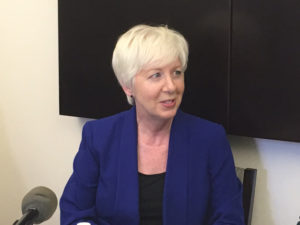
By Steve Brawner
© 2017 by Steve Brawner Communications, Inc.
Next week, legislators will meet in special session to change the Arkansas Works program to encourage its recipients to work for their benefits and, eventually, no longer need them.
Changing the program will be reasonably easy. Changing the recipients will be much harder.
Arkansas Works, formerly known as the private option, uses federal Medicaid dollars to buy private insurance for 311,000 Arkansans with incomes up to 138 percent of the federal poverty level, or about $17,000 for an individual. The state pays 5 percent of the program’s cost this year and 10 percent by 2020. The federal government pays the rest.
It was created through the Affordable Care Act, otherwise known as Obamacare, which expanded Medicaid. Many Republican-leaning states declined to participate. Arkansas instead obtained a waiver from the Obama administration allowing it to buy private insurance rather than simply enroll recipients in Medicaid.
It has allowed Arkansas to be a national leader in reducing its uninsured population. But it is a government program that has grown bigger than expected, which happens a lot.
Gov. Asa Hutchinson, who wasn’t governor when it was created, wants to keep it but shrink it, so he is asking the Trump administration to change the waiver to reduce the maximum income from 138 percent of the federal poverty level to 100 percent, or about $12,000. That will reduce the rolls by 62,000 to about 249,000. Meanwhile, his administration wants to require some beneficiaries to work at least 20 hours a week, train for a job or volunteer. Those changes require legislators to amend some state laws, which they’ll do next week.
Creating those policies is the easy part. The Legislature is expected to approve the changes quickly. The state has been talking to the Trump administration and expects to be approved. The 62,000 Arkansans bumped from Arkansas Works can buy the same insurance they have now with a federal government subsidy. Their contribution will be $13 to $19 a month, about what they are supposed to pay now, though 75 percent of them don’t because the state can’t enforce the rule. Department of Human Services (DHS) officials think most will pay next year when insurance companies can remove their coverage.
The work requirement? Let’s keep our expectations reasonable.
In a briefing with reporters Wednesday, DHS Director Cindy Gillespie said it won’t affect 161,000 of the remaining 249,000 Arkansas Works recipients. They won’t have to work because they are age 50 or above, are “medically frail,” have a minor living at home, etc. Those exemptions mirror the Supplemental Nutrition Assistance Program, formerly known as food stamps, which also serves many Arkansas Works recipients. Some of the remaining 88,000 won’t have to work either if they are students, pregnant or caring for an incapacitated person.
Most of the 88,000 are not working now. More than three-fourths have zero income. Moreover, less than two-thirds of the 62,000 with incomes between 100-138 percent, the ones who will move into private insurance, have jobs. The rest subsist on government benefits and other means.
Most recipients have not taken advantage of a big opportunity they have now. Under Arkansas Works’ current waiver granted by the Obama administration, recipients are referred to the Department of Workforce Services, which can help them get jobs. But of the more than 37,000 individuals referred to DWS in January, only 628 accessed the services or reported a new job after the referral while 703 had done so beforehand.
Changing Arkansas Works will help some people. Given access to health care and an incentive to work, they’ll begin pulling themselves up by their bootstraps.
But some will not. Regardless of whatever liberal or conservative social engineering the state attempts, some people will not be self-sufficient because of lack of skill or will, addictions or very difficult personal circumstances. And then some people will simply choose to work the system and get by.
When they arrive sick and injured at the hospital doors, society must figure out what to do with them. One option: If they can’t pay, turn them away. Another option is the pre-Affordable Care Act method of letting them use the emergency room for free and then hospitals eating the costs or shifting them to the rest of us invisibly so we can pretend they don’t exist.
The state is opting for door number three: Try to provide enough but not too much, and try to get as many off the program as possible, for their own good and the taxpayers’.
Got a better idea? Call your legislators. They meet next week.